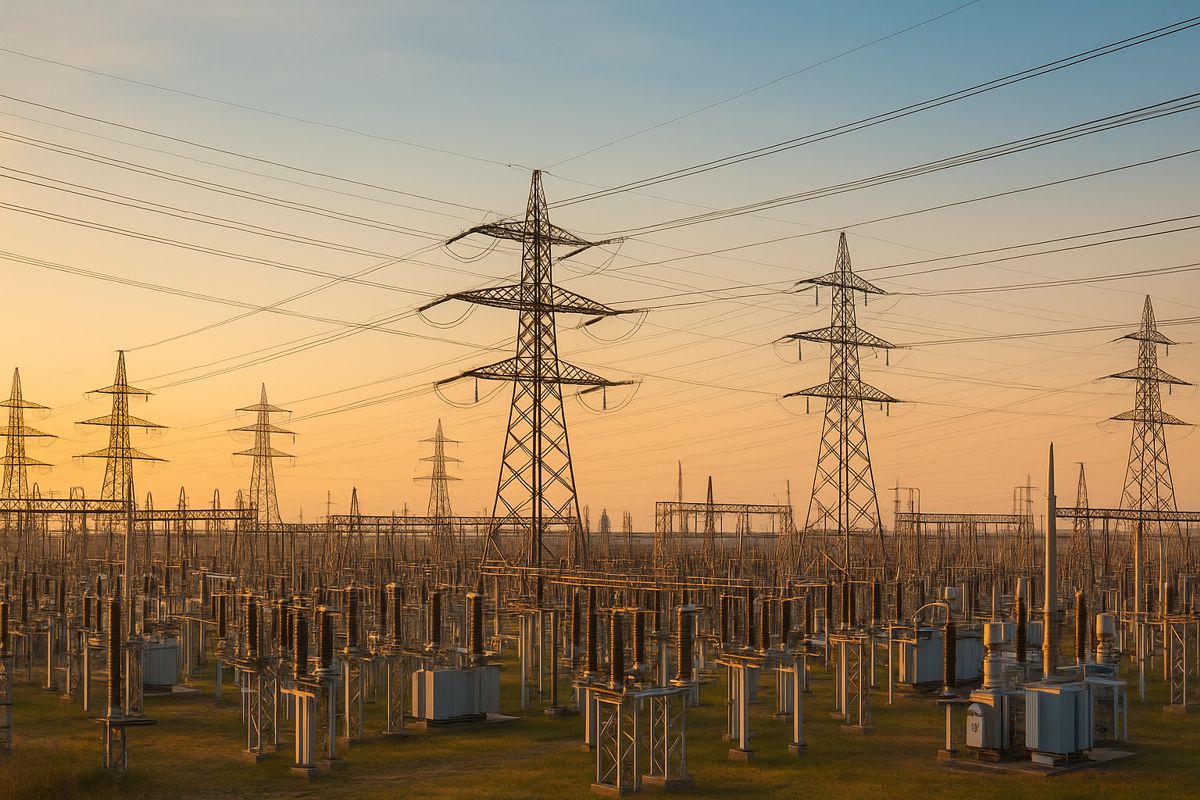Revolutionising Grid Resilience with OFIL Gridnostic and Predictive Analytics
In the ever-evolving energy landscape, resilience and reliability have never been more critical. With industries around the globe ramping up their reliance on electrification—be it data centres, electric vehicles, or smart factories—the pressure on power grids has reached an all-time high.
But it’s not just about keeping the lights on anymore; it’s about anticipating the challenges before they escalate into costly failures. Enter Gridnostic, a ground-breaking software platform developed by OFIL Systems that’s shifting the narrative from reactive to proactive.
A Smart Leap Forward in Grid Management
OFIL Systems, a name synonymous with their award-winning Daycor® cameras, has introduced Gridnostic, a first-of-its-kind solution designed to transform the way high-voltage grids are monitored and maintained. Gridnostic uses predictive analytics to intelligently assess and contextualise raw field data, offering an unprecedented level of insight into the health of power infrastructures.
This isn’t your typical software solution. By integrating directly into Geographic Information Systems (GIS), Gridnostic allows utility companies to visualise potential risks across their infrastructure with pinpoint accuracy. And the benefits don’t stop there. The software leverages its real-time data analysis capabilities to deliver severity scores that help utility managers prioritise their maintenance schedules, reducing the likelihood of disruptions. It’s a major leap forward in the realm of high-voltage grid audits, providing more than just data—it offers actionable intelligence.
“Intelligently analysing findings and prioritising activities means stakeholders have what they need to avoid failures and disruptions,” said Giora Levi, CEO of OFIL.
From Subjective to Objective
Traditionally, high-voltage grid inspections have been manual and, more often than not, subjective. Field technicians rely on visual imaging techniques that, while useful, lack the quantifiable data required for long-term analysis. This leads to inefficiencies, inconsistencies, and, quite frankly, missed opportunities to prevent failures. Gridnostic, however, changes that by integrating OFIL’s decades of experience into a platform built on sophisticated algorithms and machine learning.
Partnering with Scopito, a leader in data management, OFIL has been able to further enhance Gridnostic’s ability to process raw inspection data into comprehensive, easy-to-understand visual maps. By translating large amounts of complex information into intuitive severity scores, utility providers are equipped with the tools to make informed decisions—without the risk of human error or subjective interpretation.
“Historically, decision-making for high and medium voltage power line inspections has relied on substantial amounts of field data that were subjectively analysed, poorly managed, and unsuitable for long-term trend analysis,” Levi continued. “With Gridnostic, we’ve automated that process, ensuring consistency and reliability across the board.”
Why Predictive Analytics Matter Now More Than Ever
As the energy sector becomes increasingly digitised, the role of predictive analytics in grid management has taken centre stage. Industries are investing more into electrification, and the demand for uninterrupted, reliable power is growing exponentially. In this environment, utility providers can’t afford to be reactive—waiting for an issue to arise before addressing it is simply no longer viable.
Predictive analytics enable these companies to move from “firefighting” to forward planning. Gridnostic allows for long-term trend analysis, meaning teams can not only address existing problems but also predict and prevent future ones. This shift to predictive maintenance drastically cuts down on both downtime and repair costs. Moreover, it enhances worker safety by reducing the need for emergency interventions in dangerous, high-voltage environments.
The ripple effect? Reduced risk, more stable operations, and ultimately, happier stakeholders. For utility providers, this is a game-changer, especially as they manage the increasing pressure of keeping up with electrification demands across multiple sectors.
Real-World Success
For Denmark’s transmission system operator, Energinet, integrating Gridnostic into their operations marked a significant turning point. Responsible for maintaining critical transmission lines, Energinet had been grappling with the complexities of storing and analysing vast amounts of ultraviolet (UV) video data gathered through drone inspections. Managing such data is essential to prevent failures in their high-voltage towers, yet their existing processes couldn’t keep pace with the growing volume of information.
Christian Christiansen, Special Emergency Preparedness and Maintenance DK2 at Energinet, explains: “We faced challenges in analysing and storing UV video data from our drone inspections, which are crucial for maintaining our transmission towers. Integrating OFIL’s Gridnostic enabled us to seamlessly manage and analyse this data alongside existing inspection data, ensuring precise and efficient maintenance operations.”
This case study highlights Gridnostic’s power in real-world applications. By bringing data from different sources into a single, easy-to-navigate platform, Energinet can now streamline its maintenance operations, optimising both time and resources.
Cloud-Based Efficiency
One of Gridnostic’s standout features is its cloud-based approach. By utilising cloud storage, the platform ensures that all data—historical or real-time—is instantly accessible to teams, no matter where they are. This enhances collaboration across departments and makes remote monitoring a breeze. Utility companies can now respond to emerging risks in record time, significantly improving operational efficiency.
Moreover, the cloud-based model enables seamless updates. OFIL has designed Gridnostic to continuously incorporate new data sources and analysis techniques, ensuring that companies using the platform are always working with the most up-to-date information available. This adaptability makes Gridnostic an invaluable tool for long-term grid management.
Continuous Innovation for a More Resilient Future
As Gridnostic continues to evolve, OFIL is committed to pushing the boundaries of what’s possible in high-voltage grid maintenance. By continuously refining its analysis capabilities, the platform is poised to become the gold standard in predictive maintenance. OFIL’s ongoing partnerships with leaders in data management and technology ensure that Gridnostic remains at the cutting edge of innovation.
The ability to predict potential failures before they happen doesn’t just save companies time and money—it also helps safeguard their reputations. After all, no utility provider wants to be the headline for a major outage or safety incident. With Gridnostic, companies can plan their maintenance schedules months in advance, ensuring a resilient, reliable grid that stands the test of time.
A New Era of Grid Management
In a world where power grids are the backbone of so many critical industries, proactive maintenance is no longer optional—it’s essential. Gridnostic is leading the charge by giving utility providers the tools they need to stay ahead of the curve. By turning raw data into actionable insights, Gridnostic is transforming the way grids are managed, helping to ensure that the lights stay on, no matter what.
For stakeholders across the energy sector, from policy makers to investors, Gridnostic represents a step forward in grid resilience, reliability, and safety. And as more organisations adopt this innovative technology, the future of high-voltage grid maintenance looks brighter than ever.




















